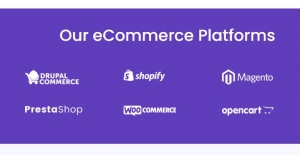Introduction
In today's fast paced business world knowledge is the real currency of growth. For B2B companies, staying ahead of the competition, understanding customer needs and predicting industry trends can be the difference between leading the market and falling behind. This is where competitive intelligence, customer sentiment analysis, data analysis services and industry insights come together as a powerful toolset.
B2B market research is no longer just about surveys and spreadsheets. It's become a data driven, customer focused, intelligence-led process that enables businesses to make smarter, faster and more informed decisions.
In this article we'll explore how these elements come together to give a 360-degree view of markets and customers.
What is Competitive Intelligence in B2B?
Competitive intelligence (CI) is the systematic process of gathering, analyzing and applying information about competitors, markets and industry dynamics. For B2B organizations CI helps answer key questions:
- What strategies are competitors using?
- Where are the gaps in our market?
- Which industries are emerging or declining?
Benefits of Competitive Intelligence
- Identify Opportunities – Find new markets, niches and trends.
- Mitigate Risks – Anticipate competitor moves and adapt quickly.
- Refine Positioning – Develop a stronger value proposition.
- Support Sales Teams – Give them competitor benchmarks and differentiators.
Example: A SaaS company using CI can track competitor product launches, pricing changes and customer feedback to fine tune its roadmap.
Customer Sentiment Analysis
While CI looks outwards, customer sentiment analysis looks inwards – directly at what customers think and feel. It uses AI, natural language processing (NLP) and social listening tools to analyses feedback from surveys, social media, forums and reviews.
Why Sentiment Analysis Matters for B2B
- Improve Product Development – Direct insights into pain points.
- Enhance Customer Experience – Spot dissatisfaction early.
- Boost Brand Perception – Monitor reputation in real time.
- Predict Customer Churn – Negative sentiment signals retention risks.
Example: A B2B IT services firm could analyses LinkedIn discussions and Gartner peer reviews to see how customers feel about their service speed compared to competitors. Role of Data Analysis Services in B2B
Data analysis services are the backbone of both CI and sentiment analysis. By turning raw data into actionable insights businesses can make data driven decisions rather than relying on intuition.
Functions of Data Analysis Services
- Data Collection & Cleaning – Ensuring accuracy and consistency.
- Segmentation – Grouping customers, industries or competitors.
- Predictive Analytics – Forecasting trends and customer needs.
- Visualization – Turning complex datasets into easy-to-read dashboards.
Example: Using predictive analytics, a logistics company can estimate demand spikes during peak seasons and optimize its operations accordingly.
Industry Insights: The Bigger Picture
Every decision in B2B needs to be rooted in industry insights deep knowledge of trends, regulations, technologies and market dynamics. These insights are derived from a mix of CI, customer research and data analysis.
Benefits of Industry Insights
- Strategic Planning – Aligning company goals with market shifts.
- Innovation – Spotting upcoming technologies before competitors.
- Investment Decisions – Identifying high growth opportunities.
- Policy Adaptation – Staying compliant with regulations.
Example: In healthcare industry insights may highlight increasing demand for telemedicine, guiding companies to invest early in digital health solutions.
B2B Market Research
At the intersection of CI, sentiment analysis, data services and insights lie B2B market research. It goes beyond just “knowing the numbers” it's about understanding the human and competitive dynamics behind them.
Types of B2B Market Research
- Primary Research – Direct surveys, interviews and focus groups.
- Secondary Research – Industry reports, databases and whitepapers.
- Competitive Benchmarking – Comparing performance across rivals.
- Customer Journey Mapping – Understanding decision making patterns.
Why B2B Market Research is Different
- Longer decision cycles.
- Multiple stakeholders (procurement, finance, operations).
- Higher value transactions.
- Emphasis on trust and relationships.
How They Work Together: An Integrated Approach
Instead of working in silos these elements combine to create a unified research and intelligence framework:
- Competitive Intelligence reveals where the market is headed.
- Customer Sentiment Analysis tells how buyers feel. Data Analysis Services turn data into insights.
- Industry Insights inform decisions.
- B2B Market Research brings it all together into action plans.
Example: A manufacturing company considering enterprise into electric vehicle components could:
- Use CI to research competitors already in EV parts.
- Use sentiment analysis to gauge supplier satisfaction in EV supply chains.
- Use data services to forecast demand.
- Use industry insights to understand regulatory incentives.
- Combine all into a go-to-market strategy.
Industry Examples
- Tech – Tracking SaaS competitor features, customer reviews, and AI tool adoption.
- Healthcare – Patient sentiment, drug pricing data, and regulatory trends.
- Finance – Fintech competitors, customer trust, and economic impact.
- Manufacturing – Supply chain benchmarking, demand forecasting, and sustainability regulations.
Future of Competitive Intelligence & Research
- AI-Driven Analytics – Automated data collection and interpretation.
- Real-Time Insights – From static reports to live dashboards.
- Deeper Personalization – Individual decision-maker understanding.
- Ethical Data Use – Balancing insights with privacy.
Summary
In a world of hyper-competition and data overload, competitive intelligence, customer sentiment analysis, data analysis services, industry insights, and B2B market research are not nice-to-haves – they're must-haves. Together they give B2B companies the clarity to predict, adapt and win.
Companies that invest in these will not just react to the market – they'll shape it.






